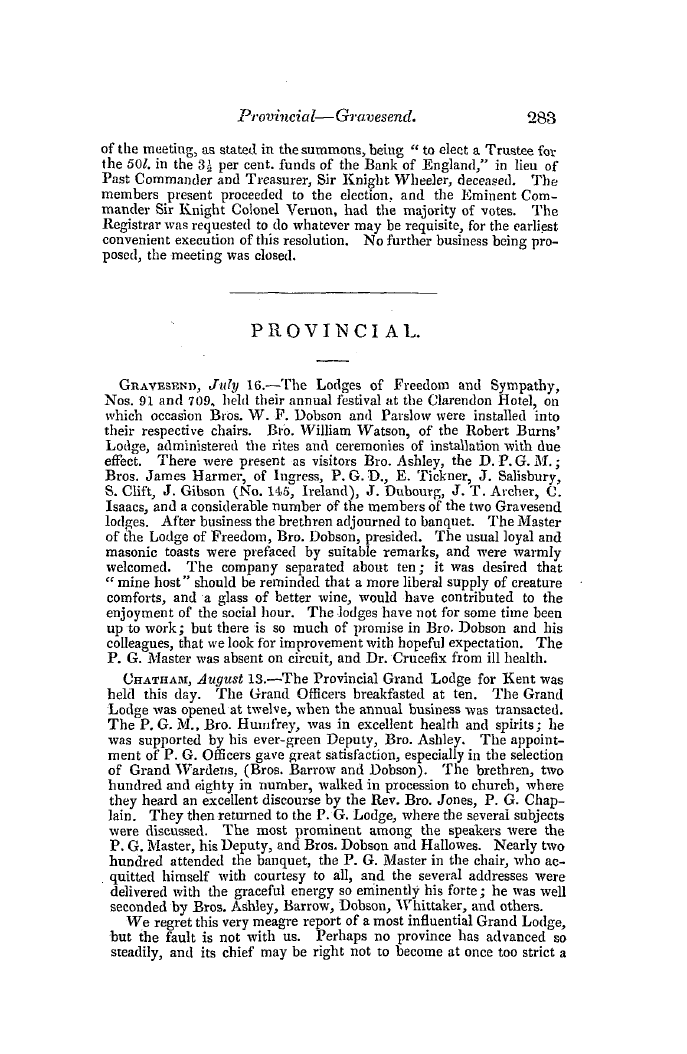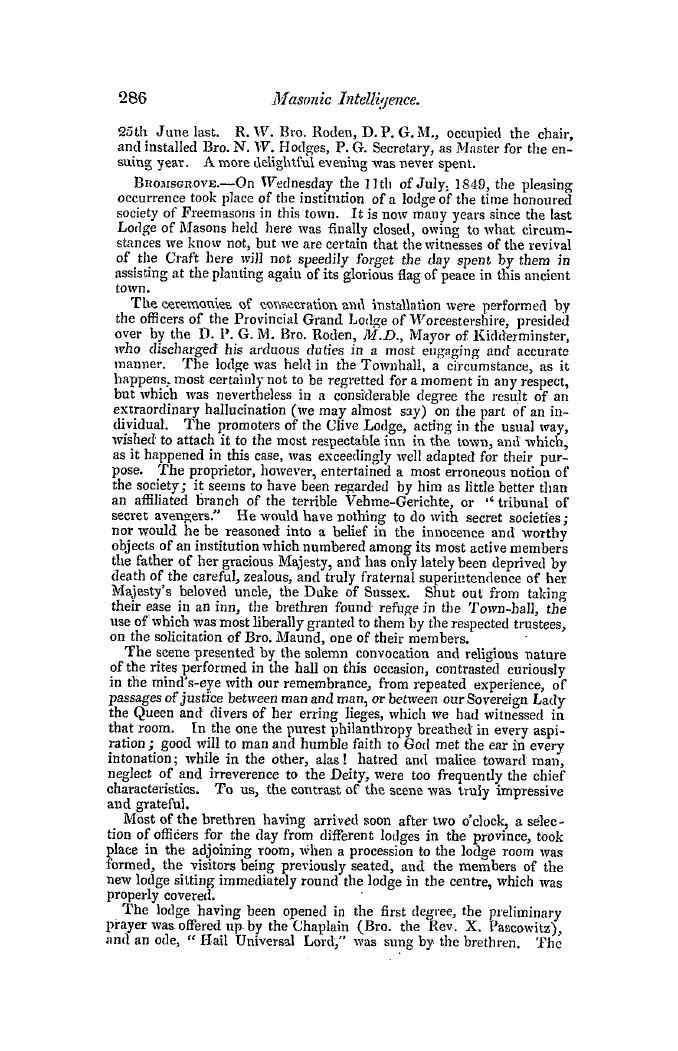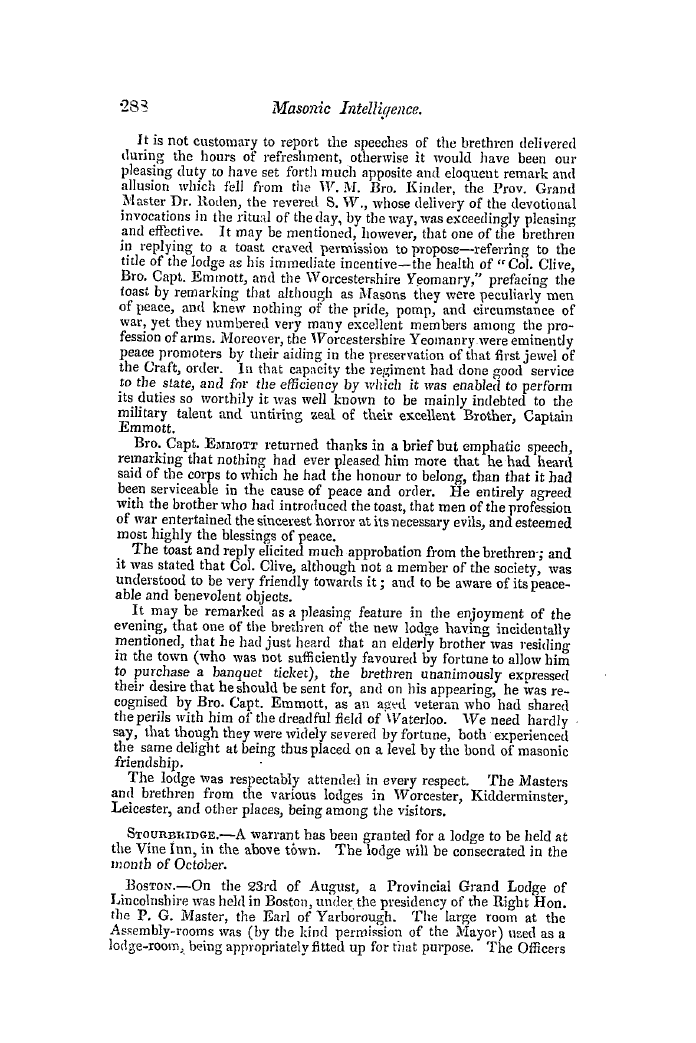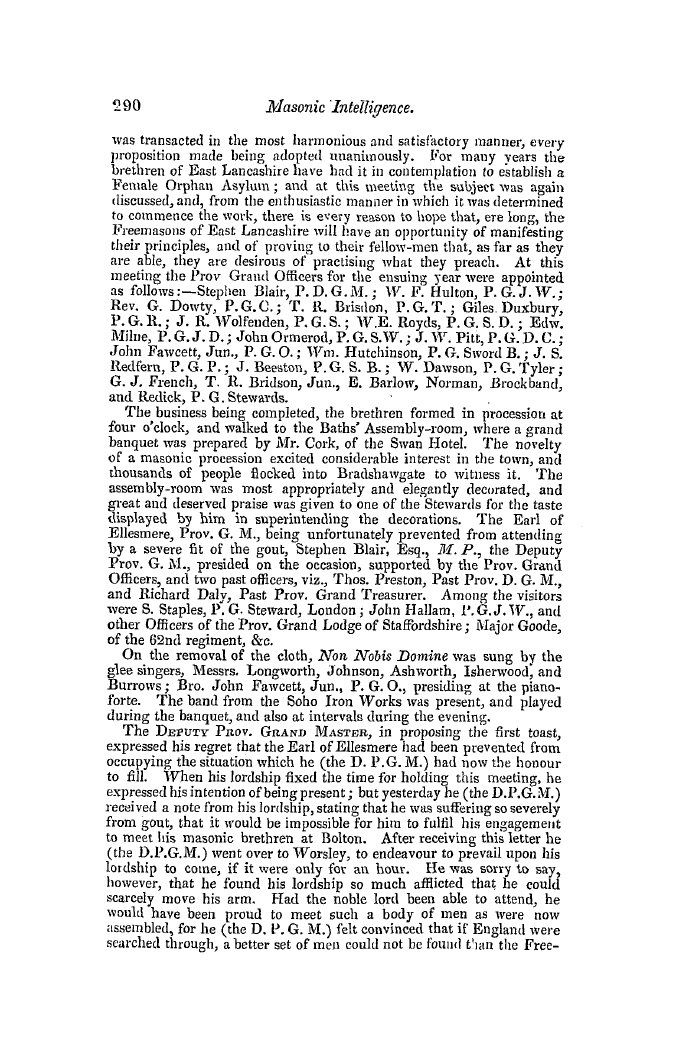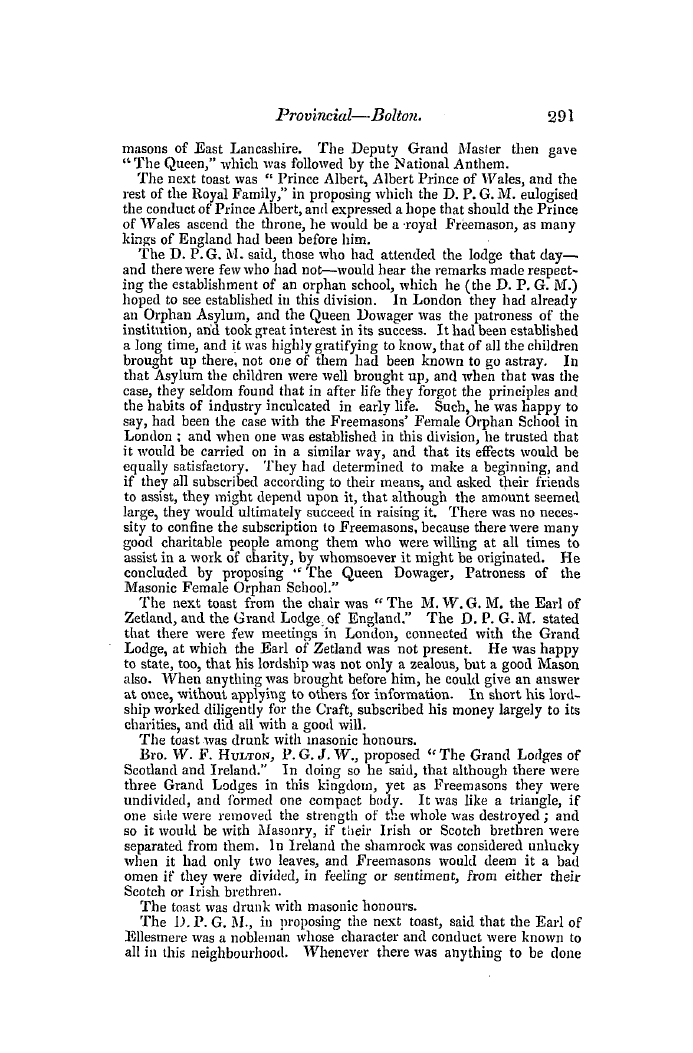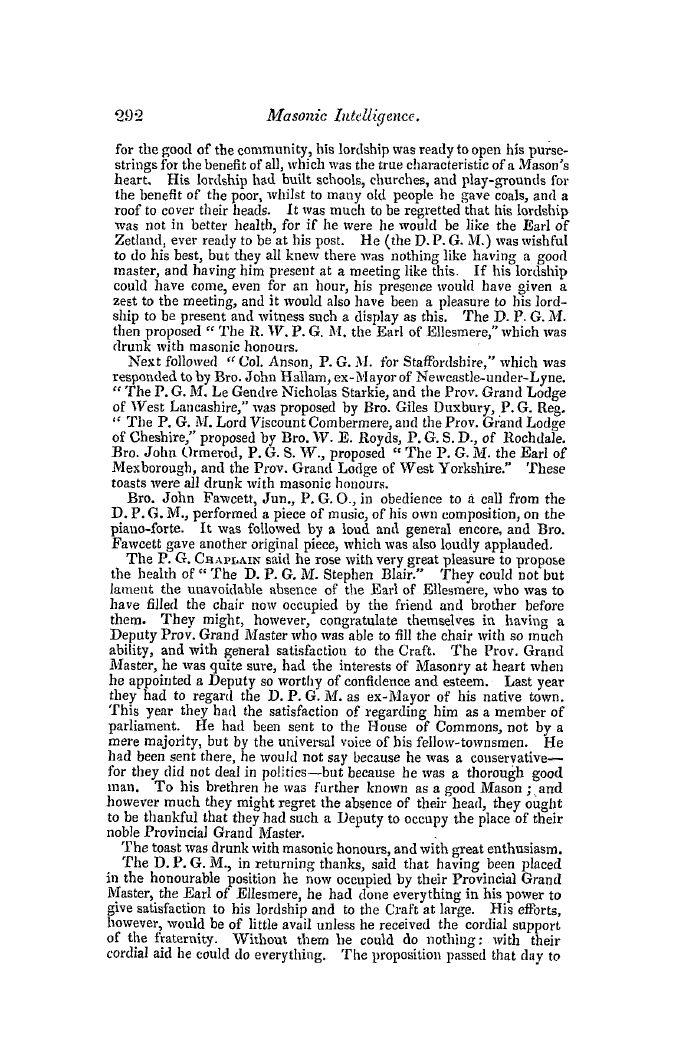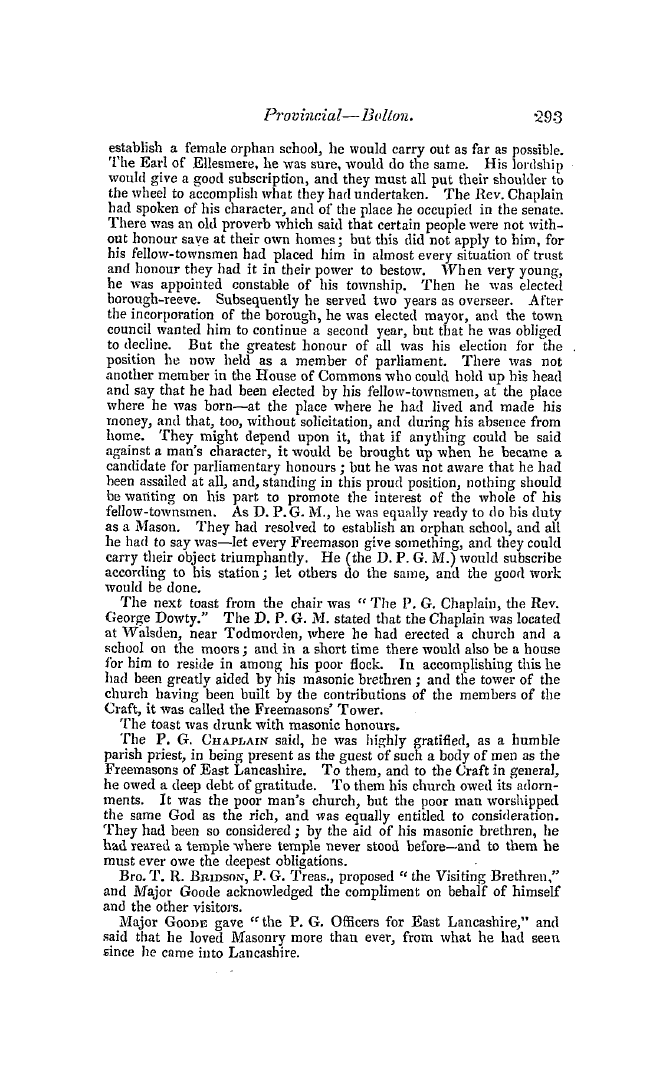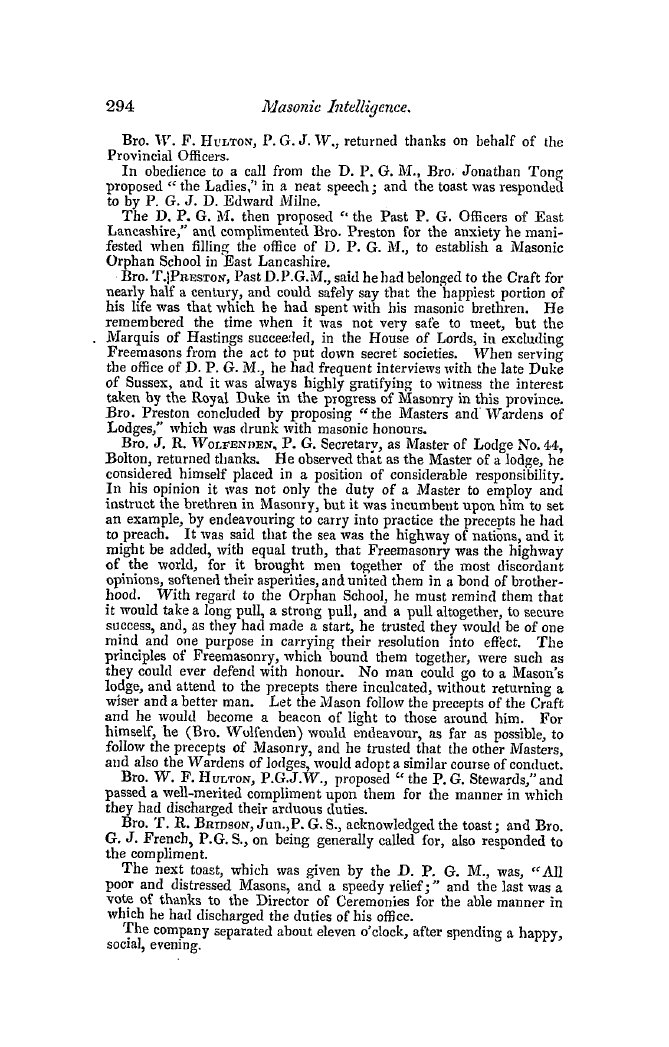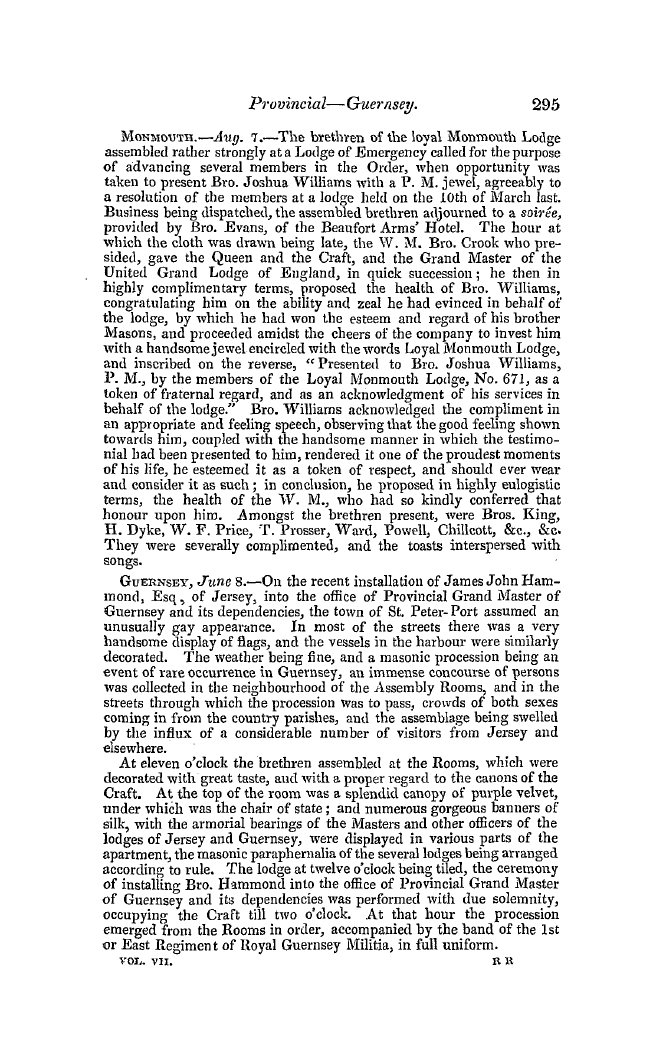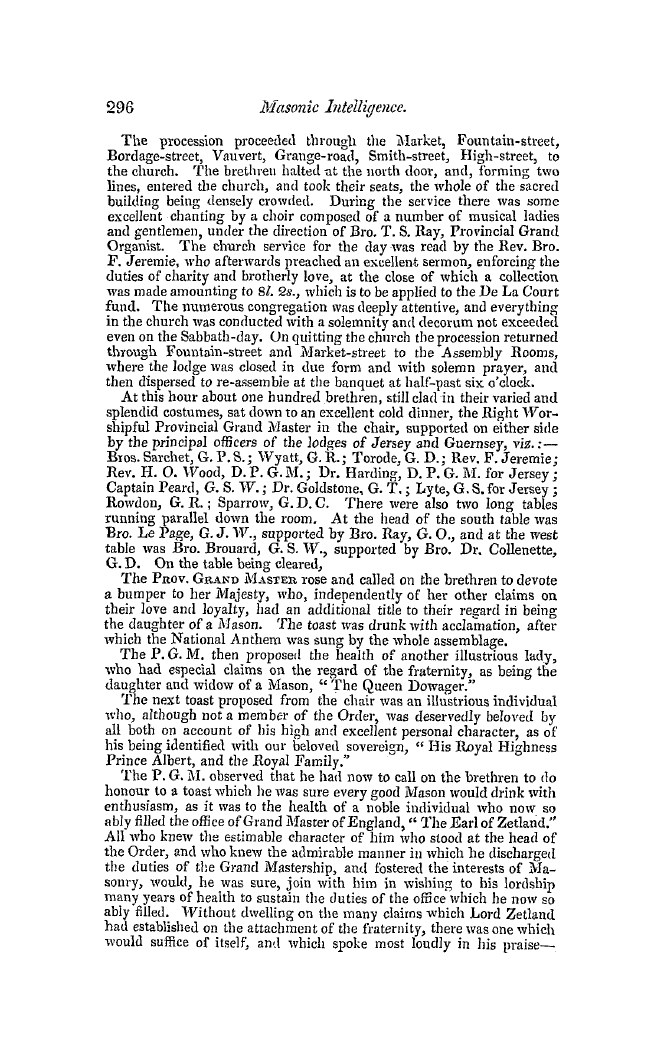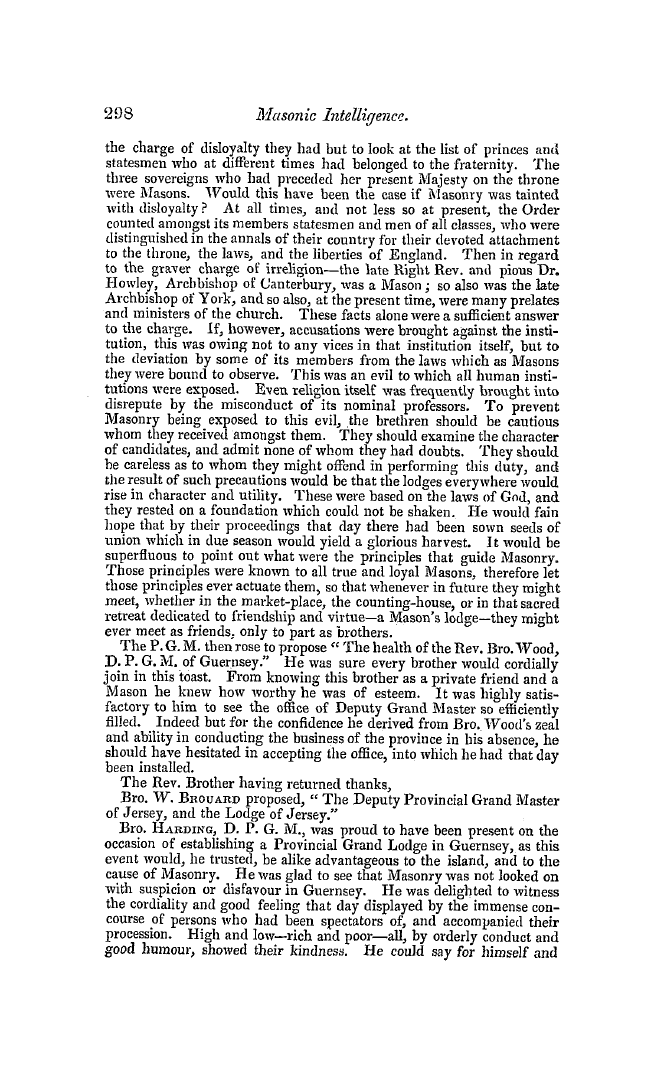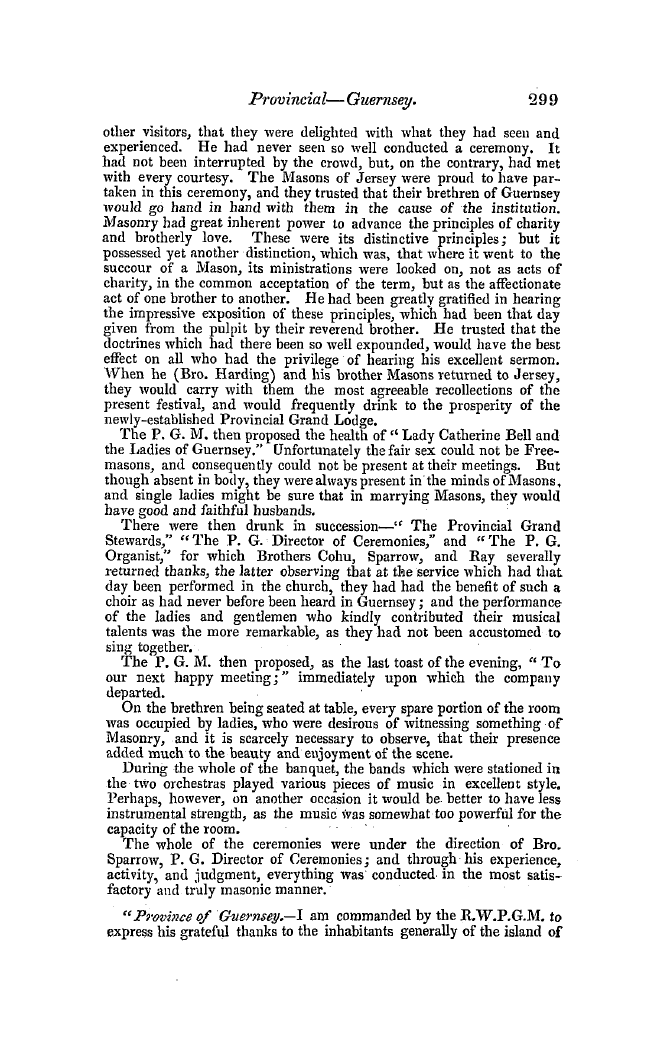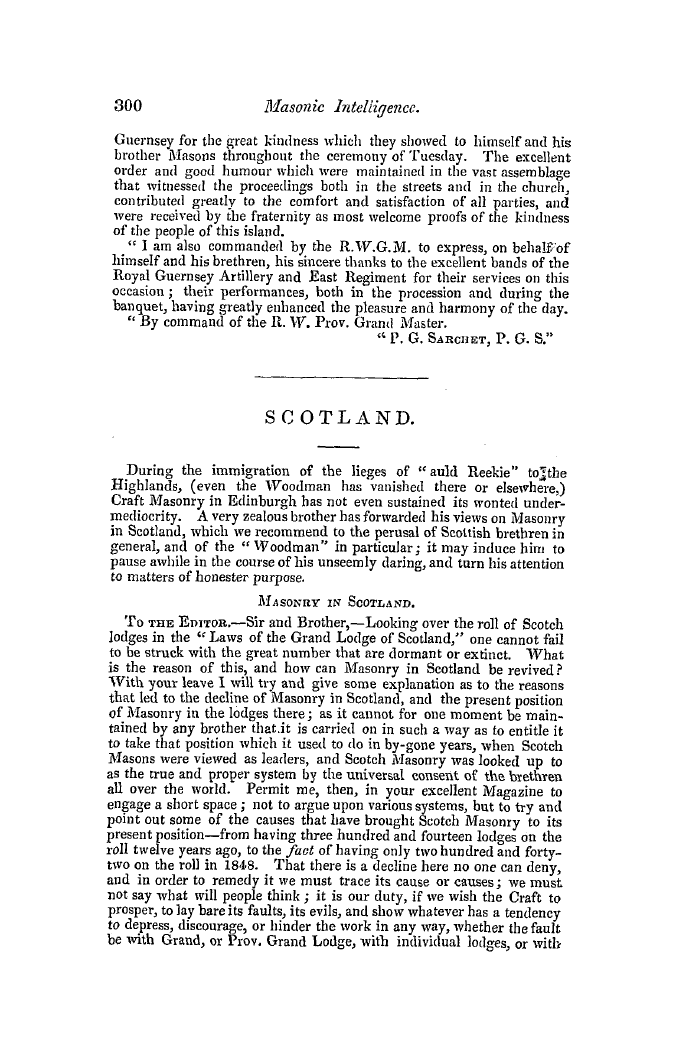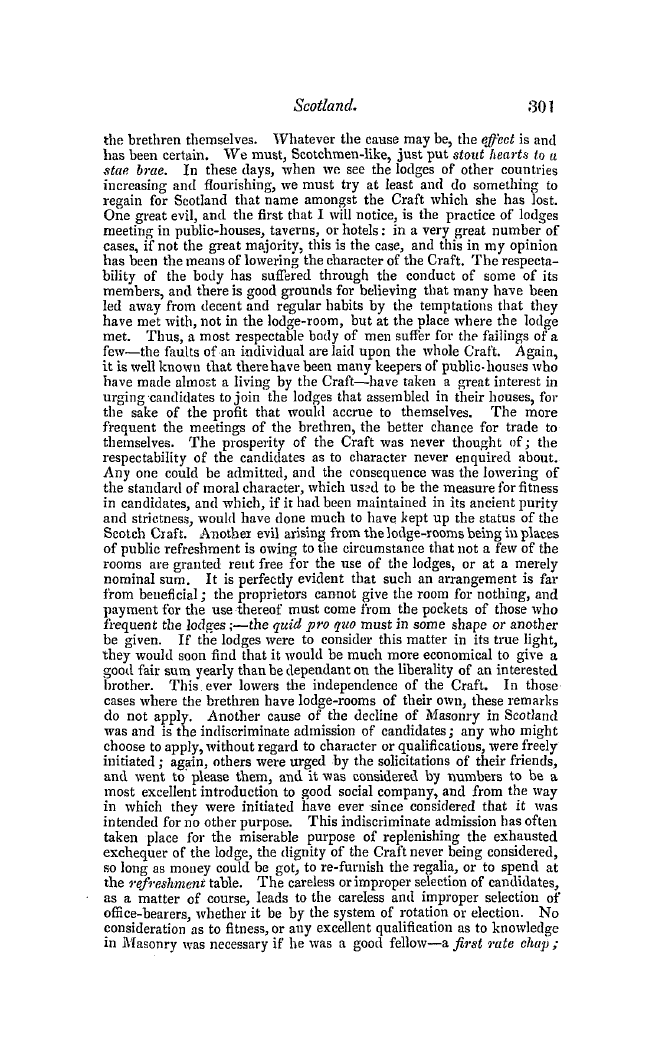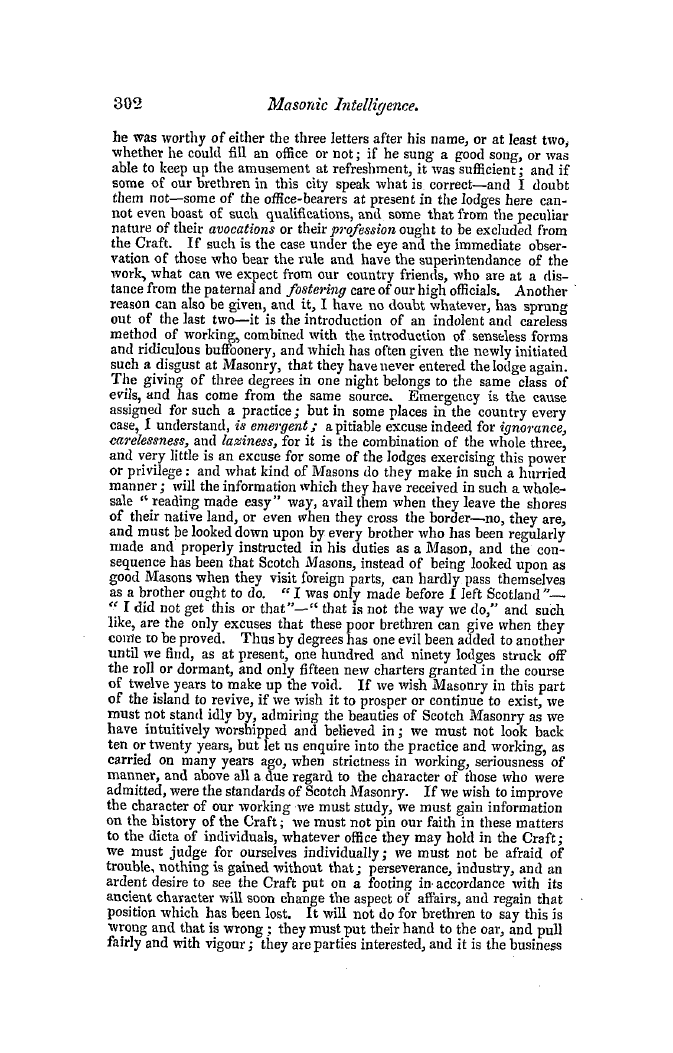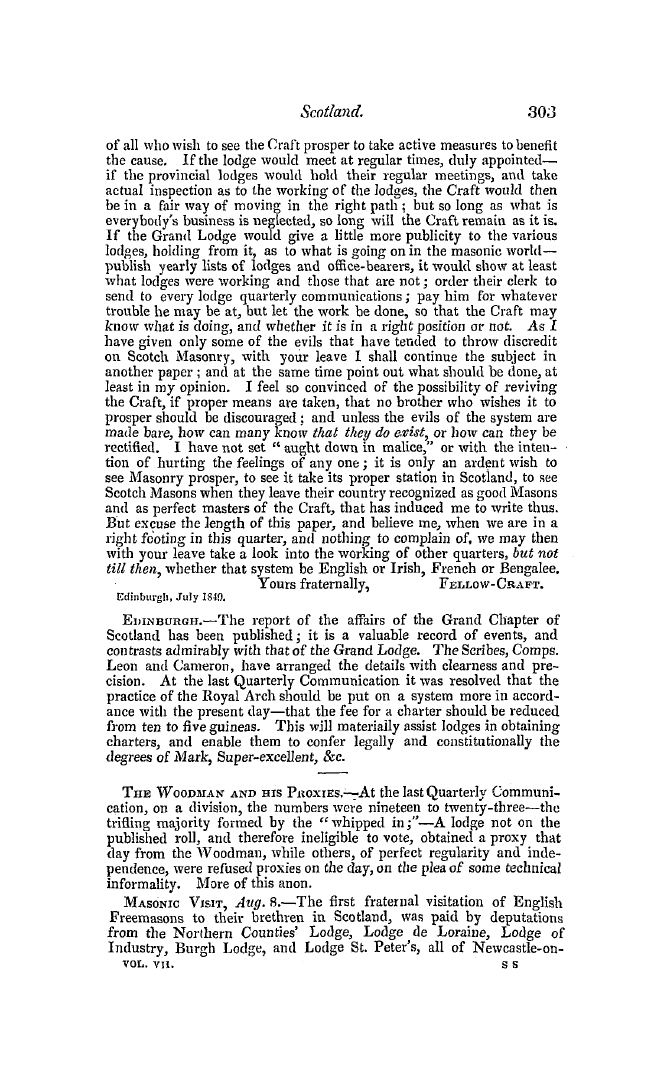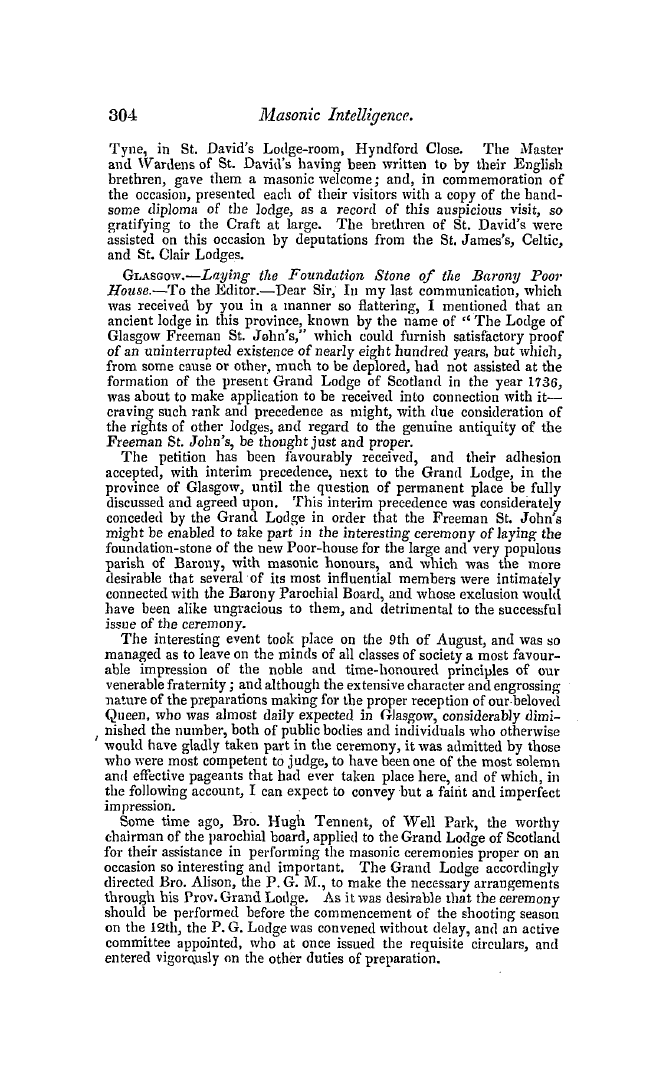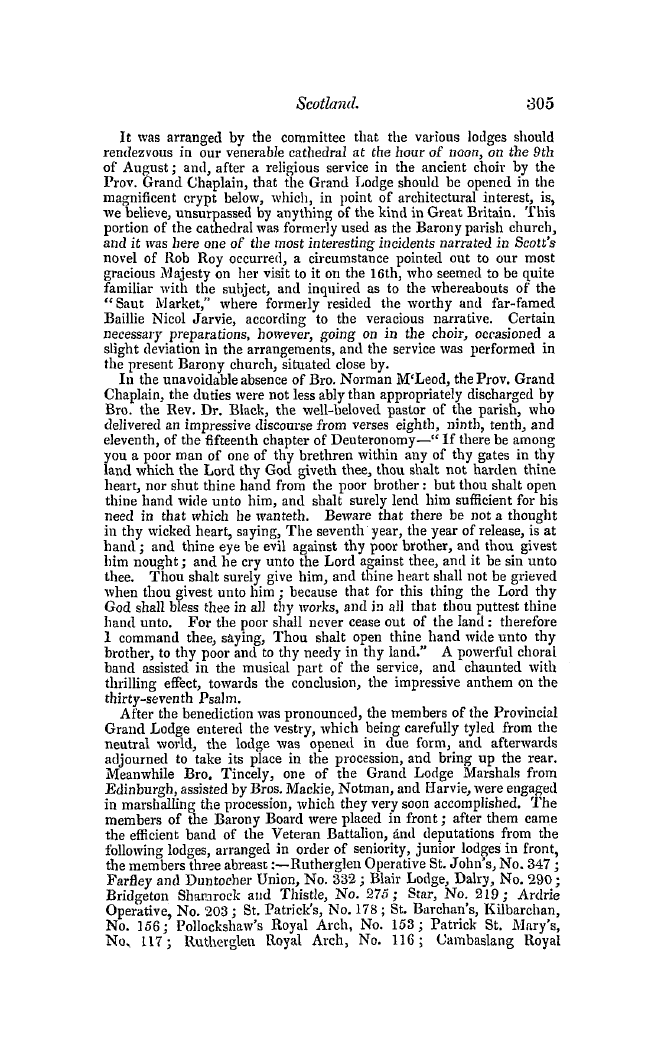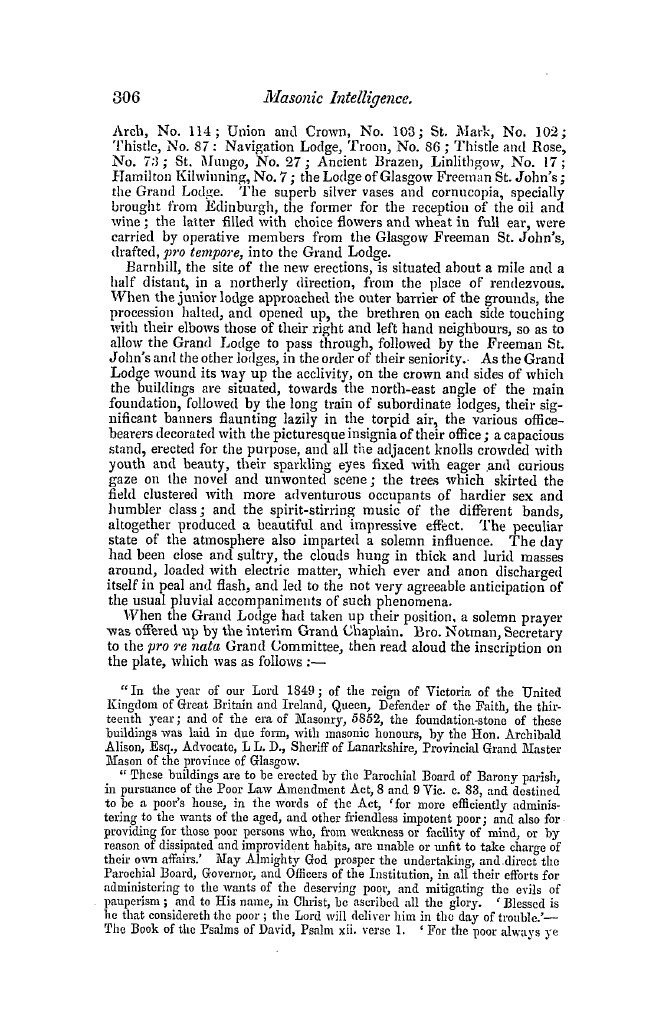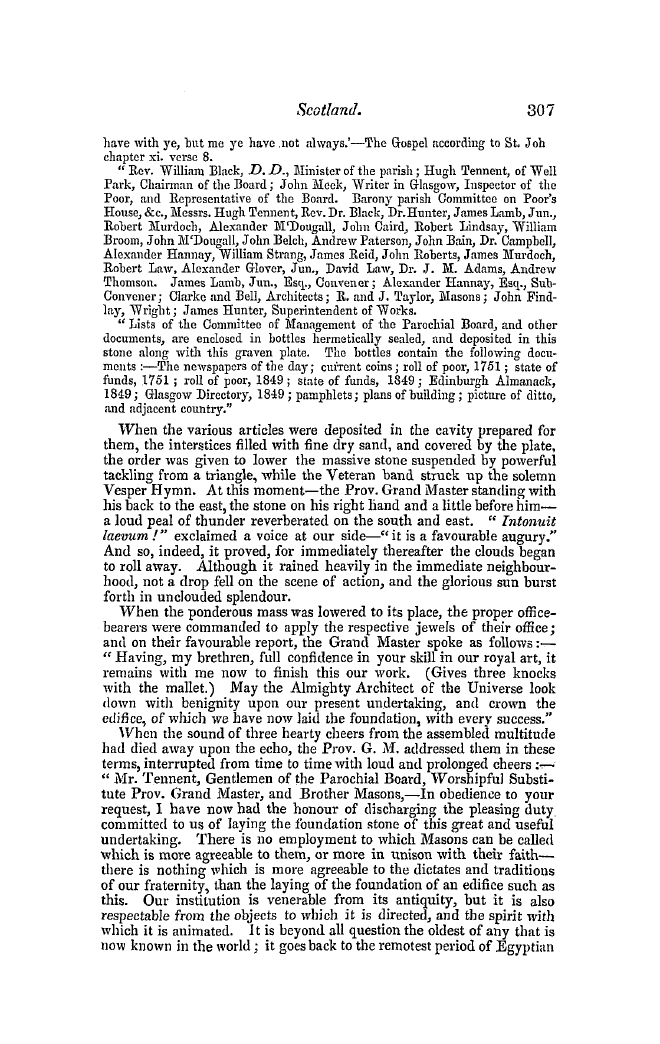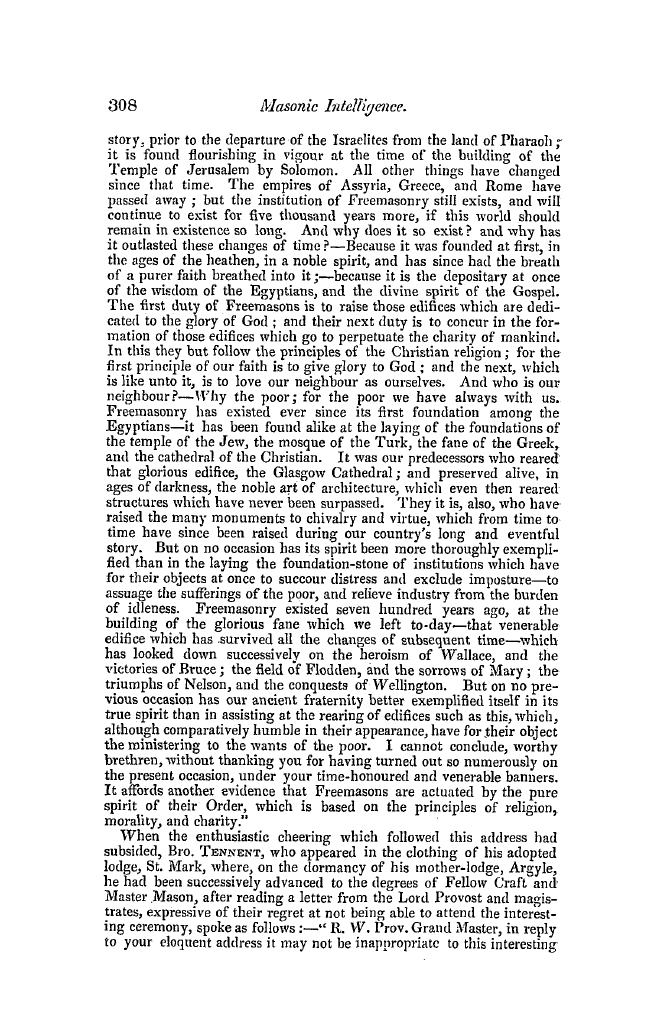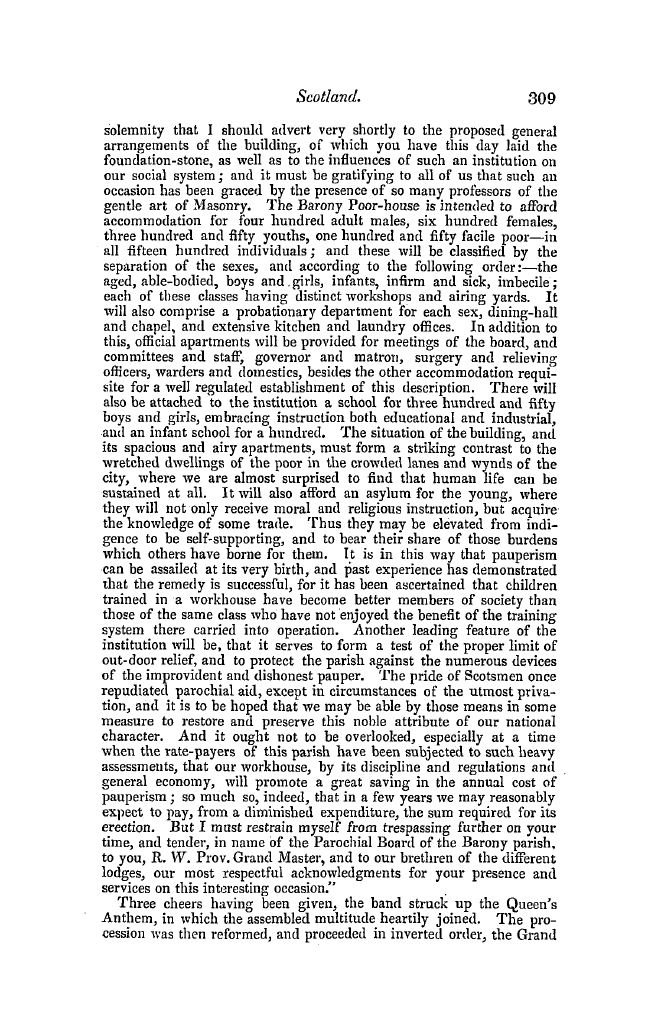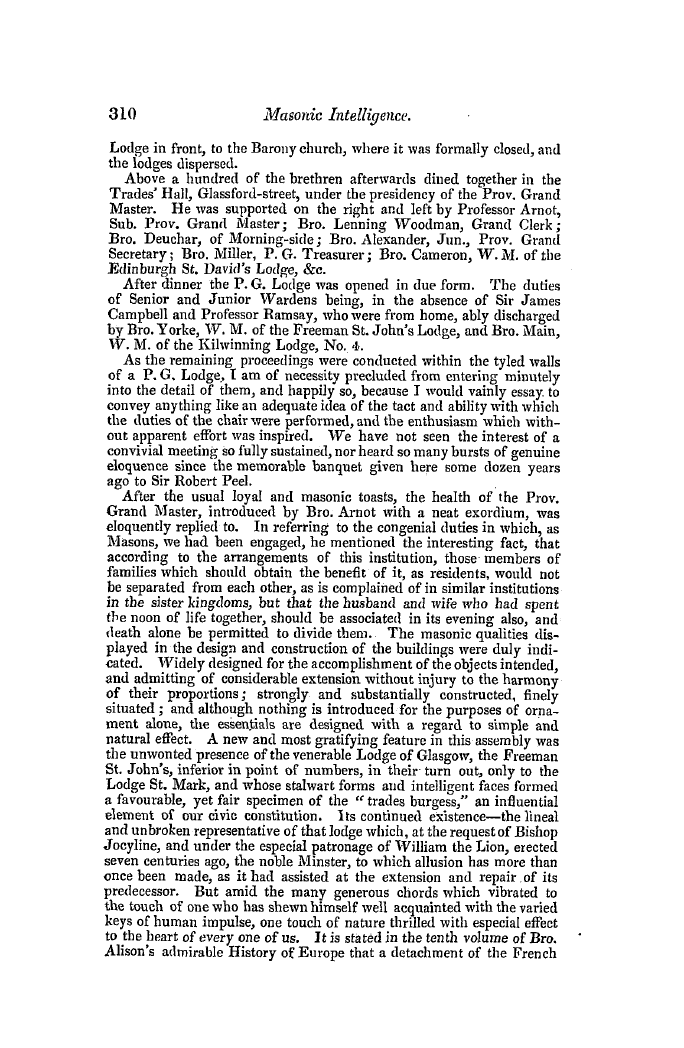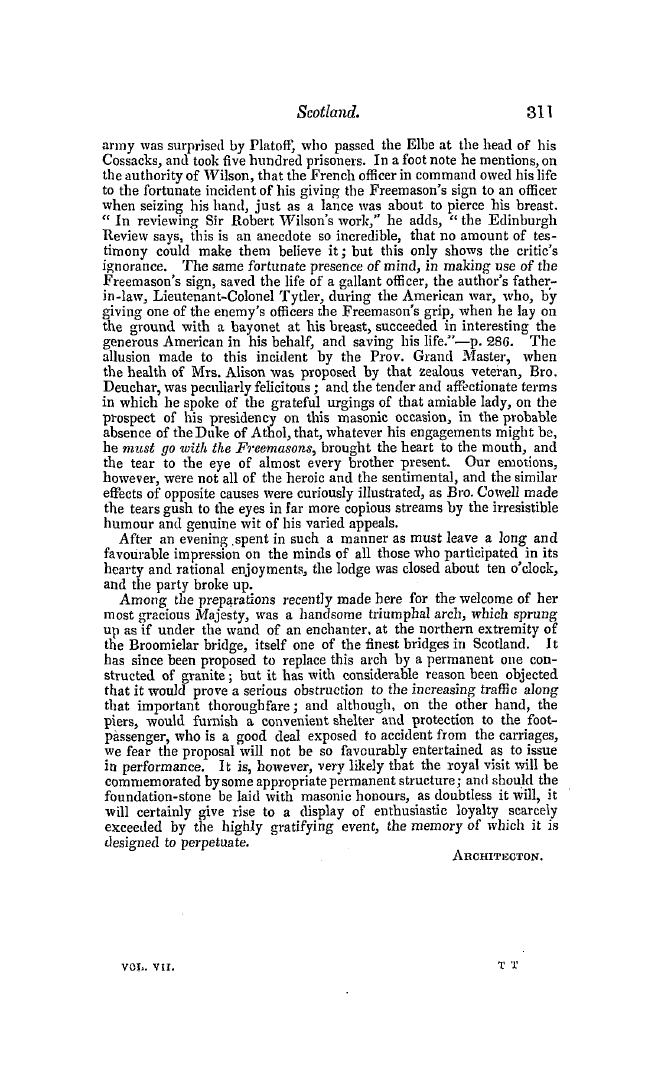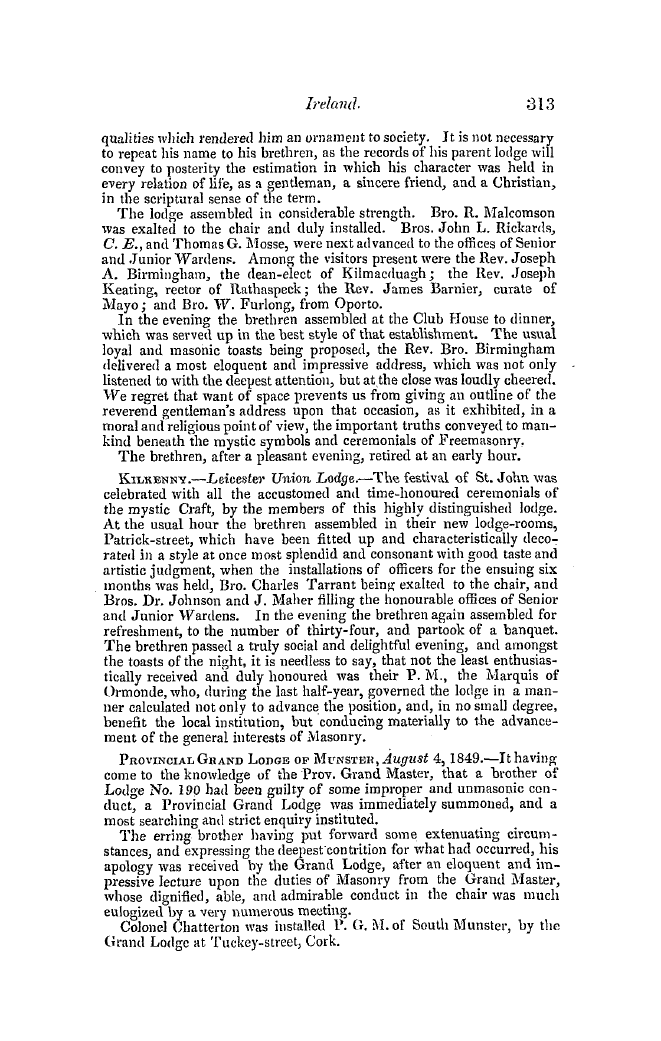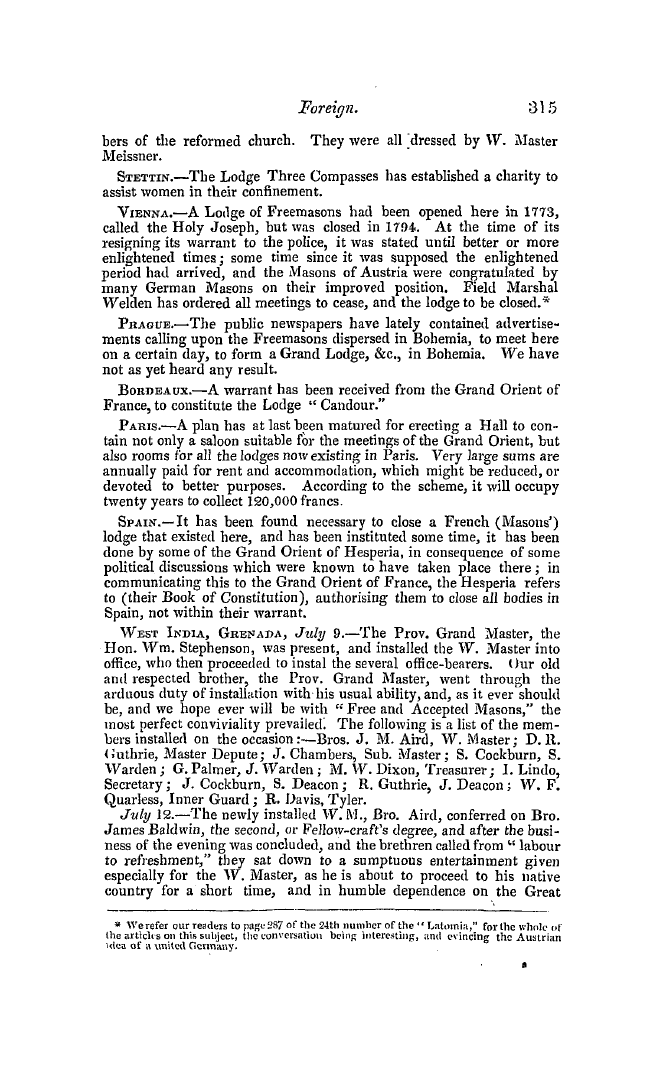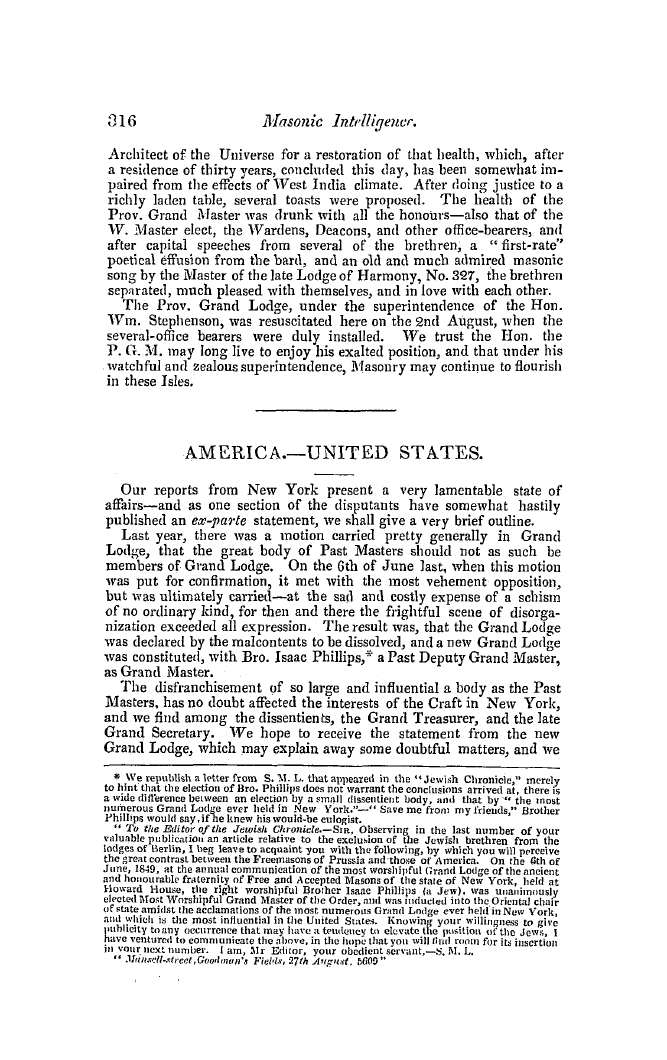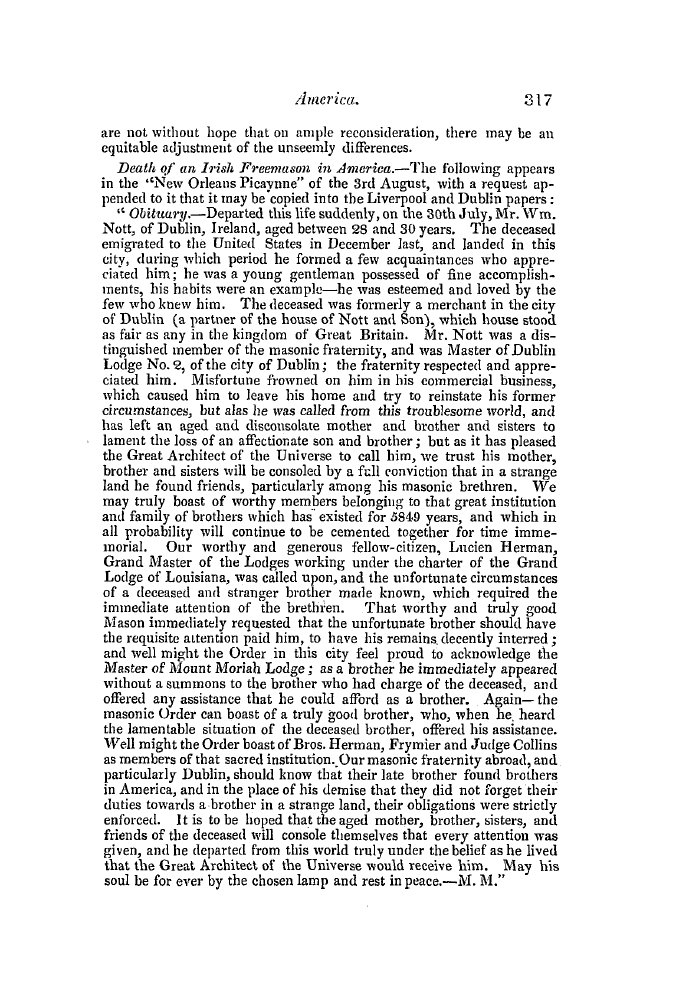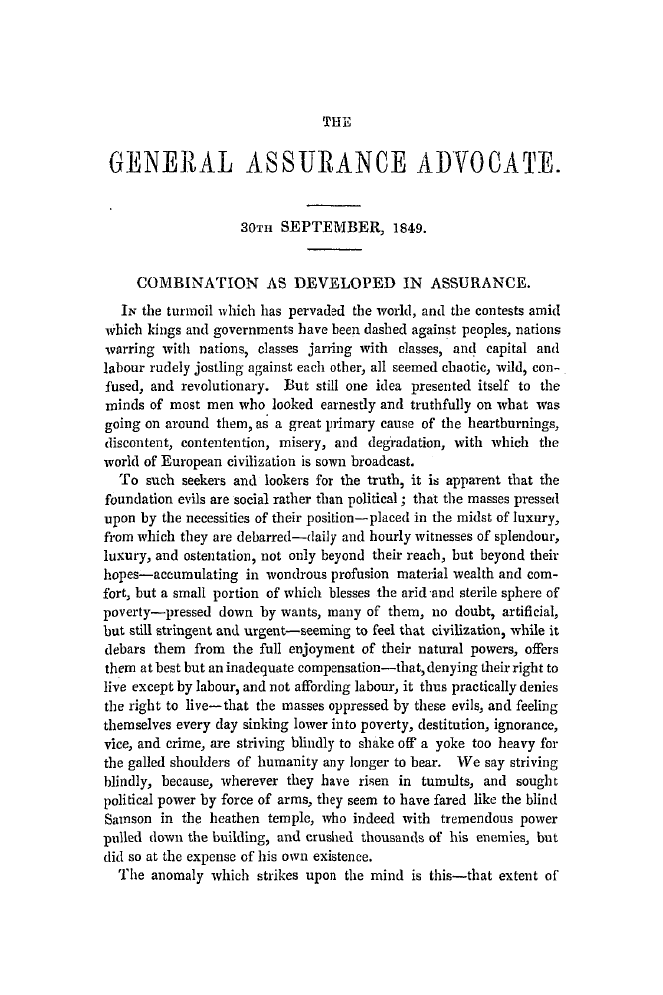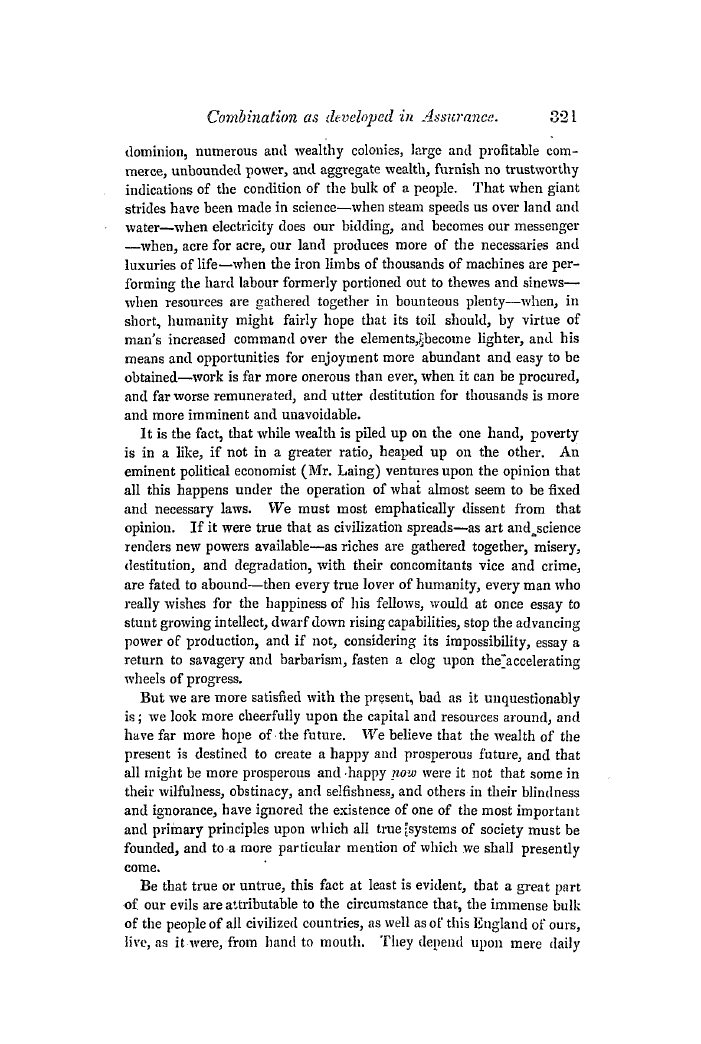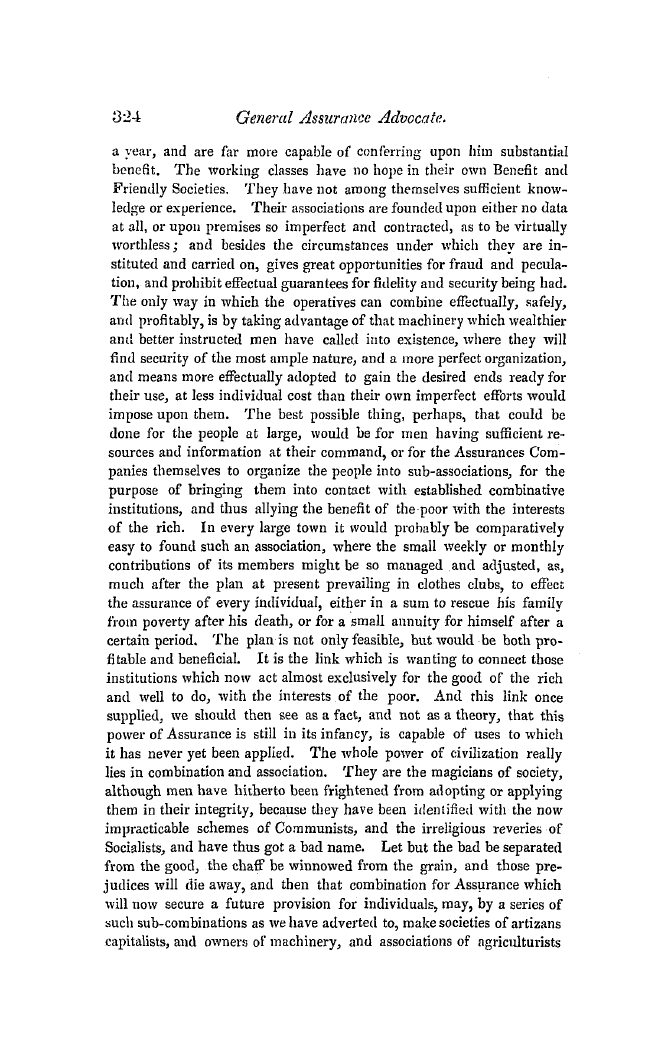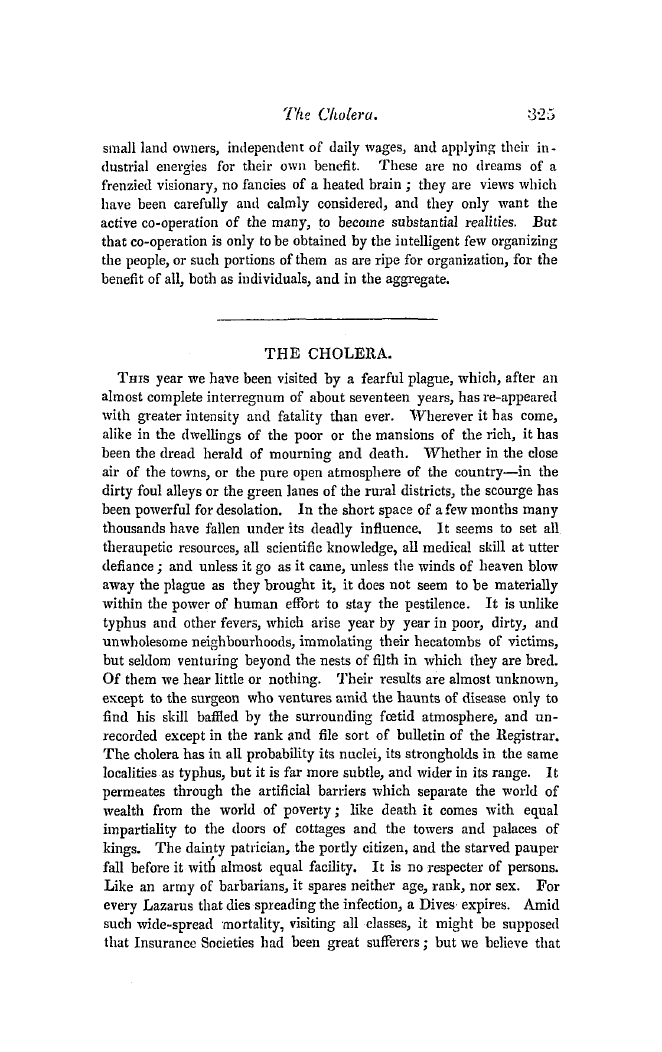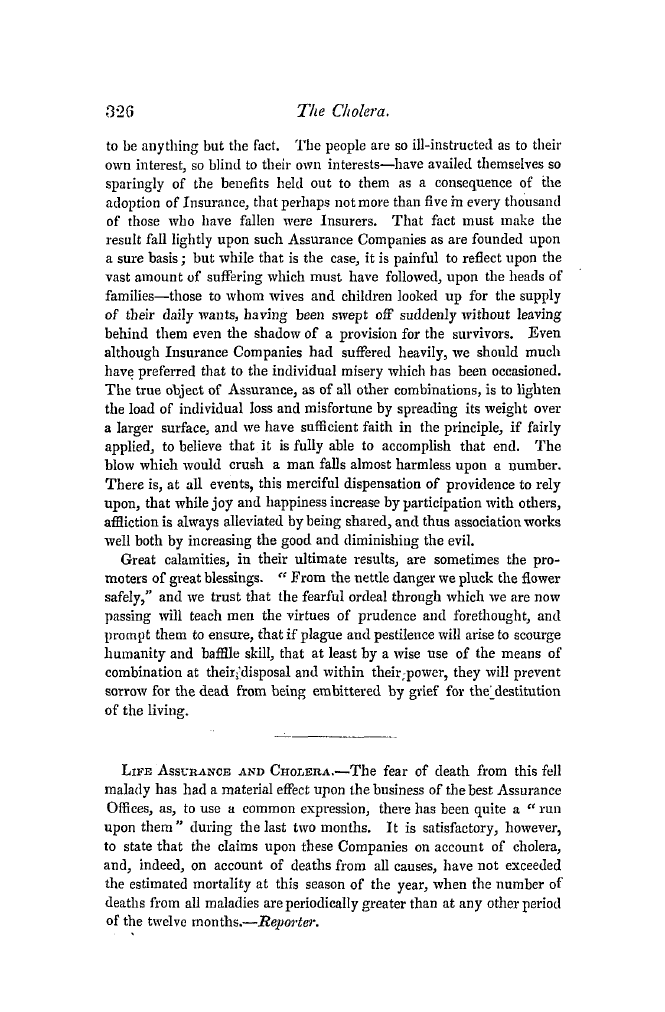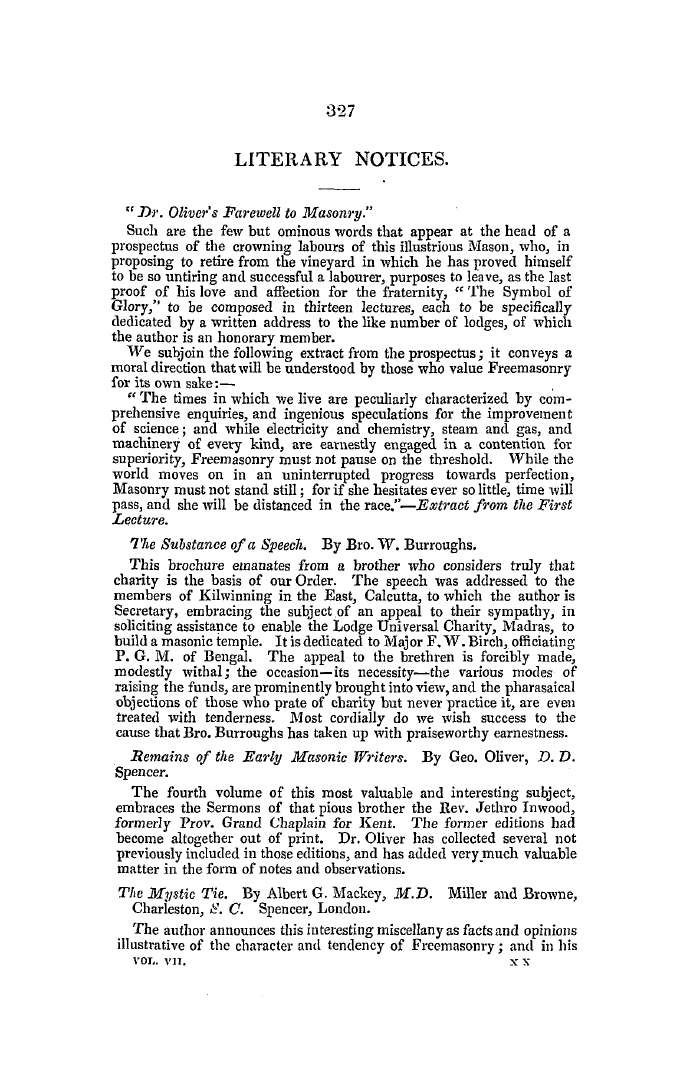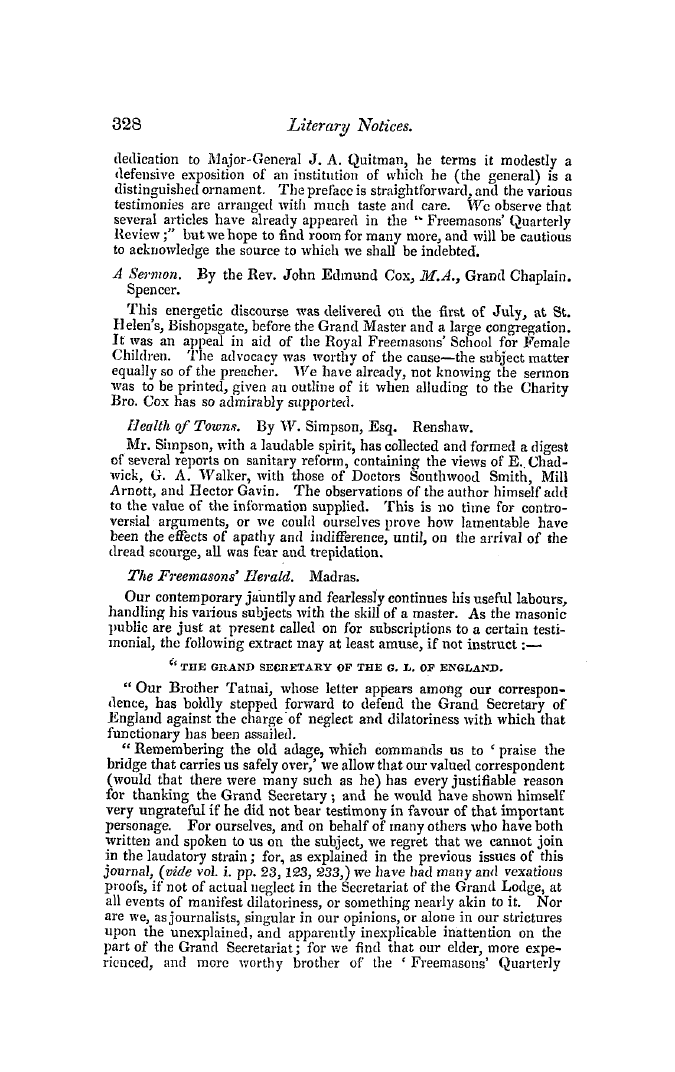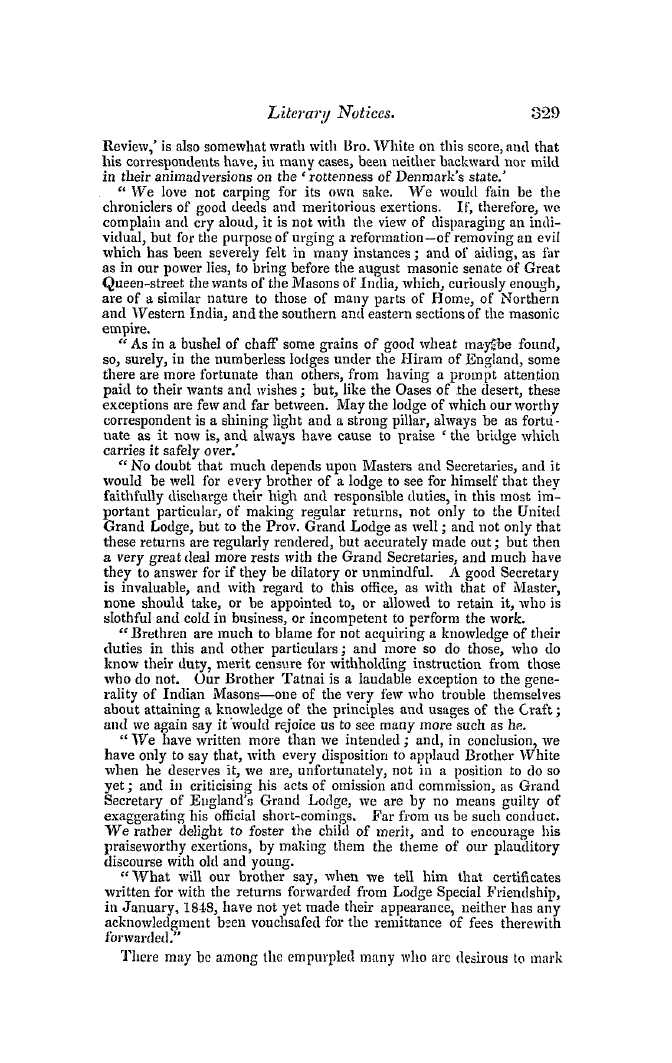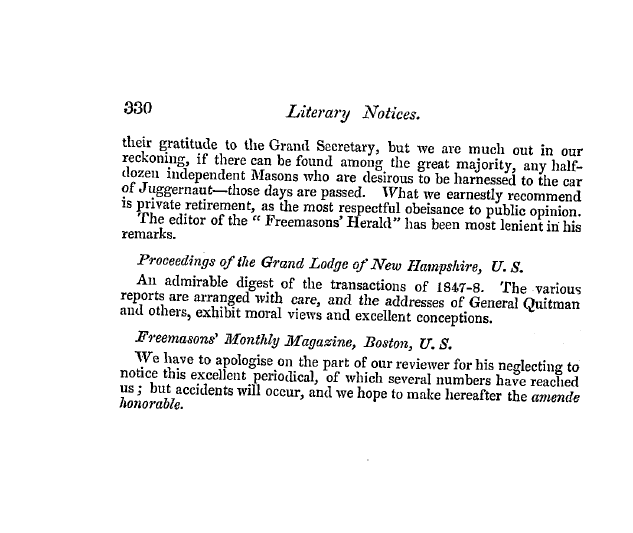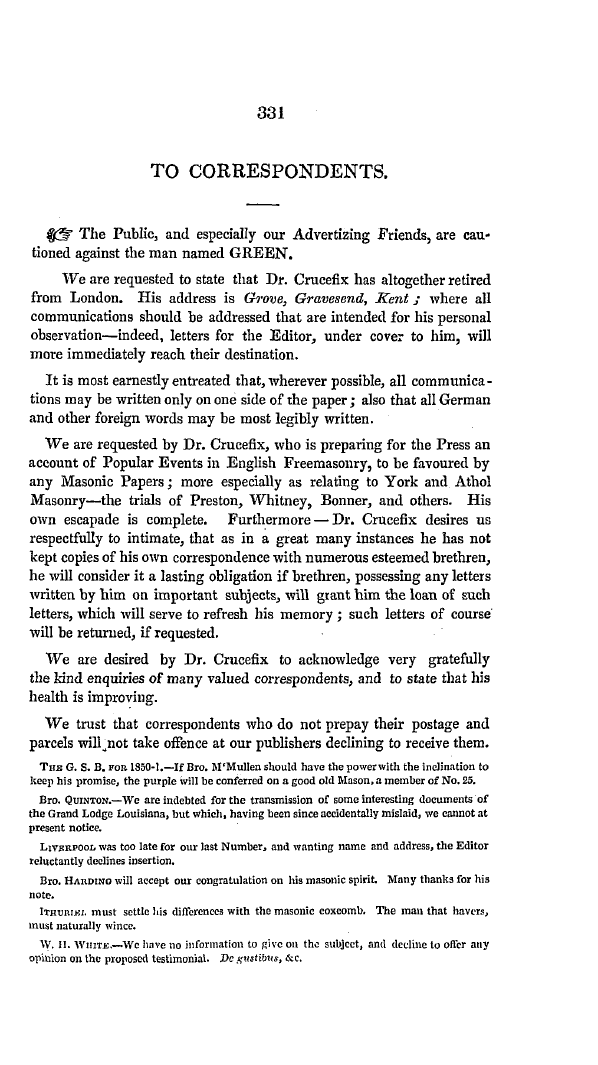-
Articles/Ads
Article THE INEFFABLE NAME. ← Page 4 of 6 →
Note: This text has been automatically extracted via Optical Character Recognition (OCR) software.
The Ineffable Name.
of His divinity ; and being capable of being read in three different ways , three names in one , formed a striking illustration of that triad of deity , which , it is remarkable to observe , was from the earliest period a fundamental religious tenet of every nation upon earth , and was introduced into every mysterious system practised by them . The oracular tenet of the ancient world was— "Throughout the world a Triad shines forth , over which a Monad rules . " Uavri yap ei > Kocrfia \ a / imi rpiasrjr
, novas apxei . ( " Oracles of Zoroaster , Ane . Frag . " 346 , No . 36 . ) It is probable , also , that Baal himself was in some measure a triple divinity , from the words Baal Shilishi , or the Triple Baal , referred to in 2 Kings , iv . 42 . ( See " Cory ' s Myth . Enq . " p . 61 . ) This Baal is supposed to be the same god as Moloch of the Ammonites , which also signified fire , and the Seadhac of the Phenicians , which was the name of the sun . Moloch was the Seeva ofthe Brahmins ; and , with Brahma and Vishnu ,
formed the divine triad worshipped in the mysterious name AUM , pronounced Om ; by the respective letters of which sacred triliteral syllable they expressed the powers into which he tri plicates himself . ( 3 . "Asiatic Researches , " 359 . ) The chief god of the Egyptians was designated upon the oldest monuments by the name of Amun , and this is evidently the sacred name , the Aum of the Brahmins , which appears to be that alluded to b y Martianus Capella . ( " Hymn , ad Solem . " )
" Salve vera Deum faeies , vuUusque patemi , Octo et sexcentis , numeris cui litera trina Conformat sacrum nomen cognomen et omen . " And was the same also as On , or Aun , tbe Universal Father of the scriptures . ( "Cory . Myth . Enq . " 39 . ) The same god was worshipped by numerous nations under different appellations , but with the same attributes , and is the same as Dag-on of the Philistines , Oannes of the Chaldees . The ChineseJapaneseand Cingalesewho practised
Budd-, , , hism , but with ceremonies very similar to the Indians , used the word O . Mi . To . Fo ., signifying Omnipotence ; and it has been also said that the Thibetians pronounced their sacred term Om hohum . ( "Sandys . Hist , of Freem . " p . 23 . ) The Persian god Omanus , or Ormuzd , has also been suggested as identical . ( "Cory ' s Myth . " p . 67 . ) This Aun , or On , is evidently also the same as the Celtic triple deity Ain , of which an old Irish commentator says— " Ain , triple god ; Tanlac , Fau , and Mollac . "
( See " Cooke de Druidis , " 14 , also " Higgins . Celtic Druids . " ) This also confirms the fact of Moloch being the third person ofthe Aum , as Mollac is identical with Moloch . The Greek particle On , used as implying a self-existent God , and as such used by St . John in Rev . i . 4 , was probably introduced among the Greeks by Plato , in reference to the mythological On , when he acknowledges his eternity and incomprehensibility in these remarkable words : — " Tell me of the god On , which is and
never knew beginning . "—( In "Timaso , " v . 3 , p . 27 ; quoted in Dr . Oliver ' s " Signs and Symbols , " p . 35 . ) Such were the names most generally used by heathen nations , and as applied by them to their idols , were forbidden by the true God to be addressed to him ; but the most acceptable name was that sacred one revealed to Moses at Horeb , by God himself , who when asked by what name he should be called replied , " I am that I am . " The word we
translate , I am that I am , in the Hebrew stands iTIiT , JEUE . The exact and proper pronunciation of this name has been a matter of dispute ; but it is far from probable that the pronunciation of the presen t day VOL . VII . L L
Note: This text has been automatically extracted via Optical Character Recognition (OCR) software.
The Ineffable Name.
of His divinity ; and being capable of being read in three different ways , three names in one , formed a striking illustration of that triad of deity , which , it is remarkable to observe , was from the earliest period a fundamental religious tenet of every nation upon earth , and was introduced into every mysterious system practised by them . The oracular tenet of the ancient world was— "Throughout the world a Triad shines forth , over which a Monad rules . " Uavri yap ei > Kocrfia \ a / imi rpiasrjr
, novas apxei . ( " Oracles of Zoroaster , Ane . Frag . " 346 , No . 36 . ) It is probable , also , that Baal himself was in some measure a triple divinity , from the words Baal Shilishi , or the Triple Baal , referred to in 2 Kings , iv . 42 . ( See " Cory ' s Myth . Enq . " p . 61 . ) This Baal is supposed to be the same god as Moloch of the Ammonites , which also signified fire , and the Seadhac of the Phenicians , which was the name of the sun . Moloch was the Seeva ofthe Brahmins ; and , with Brahma and Vishnu ,
formed the divine triad worshipped in the mysterious name AUM , pronounced Om ; by the respective letters of which sacred triliteral syllable they expressed the powers into which he tri plicates himself . ( 3 . "Asiatic Researches , " 359 . ) The chief god of the Egyptians was designated upon the oldest monuments by the name of Amun , and this is evidently the sacred name , the Aum of the Brahmins , which appears to be that alluded to b y Martianus Capella . ( " Hymn , ad Solem . " )
" Salve vera Deum faeies , vuUusque patemi , Octo et sexcentis , numeris cui litera trina Conformat sacrum nomen cognomen et omen . " And was the same also as On , or Aun , tbe Universal Father of the scriptures . ( "Cory . Myth . Enq . " 39 . ) The same god was worshipped by numerous nations under different appellations , but with the same attributes , and is the same as Dag-on of the Philistines , Oannes of the Chaldees . The ChineseJapaneseand Cingalesewho practised
Budd-, , , hism , but with ceremonies very similar to the Indians , used the word O . Mi . To . Fo ., signifying Omnipotence ; and it has been also said that the Thibetians pronounced their sacred term Om hohum . ( "Sandys . Hist , of Freem . " p . 23 . ) The Persian god Omanus , or Ormuzd , has also been suggested as identical . ( "Cory ' s Myth . " p . 67 . ) This Aun , or On , is evidently also the same as the Celtic triple deity Ain , of which an old Irish commentator says— " Ain , triple god ; Tanlac , Fau , and Mollac . "
( See " Cooke de Druidis , " 14 , also " Higgins . Celtic Druids . " ) This also confirms the fact of Moloch being the third person ofthe Aum , as Mollac is identical with Moloch . The Greek particle On , used as implying a self-existent God , and as such used by St . John in Rev . i . 4 , was probably introduced among the Greeks by Plato , in reference to the mythological On , when he acknowledges his eternity and incomprehensibility in these remarkable words : — " Tell me of the god On , which is and
never knew beginning . "—( In "Timaso , " v . 3 , p . 27 ; quoted in Dr . Oliver ' s " Signs and Symbols , " p . 35 . ) Such were the names most generally used by heathen nations , and as applied by them to their idols , were forbidden by the true God to be addressed to him ; but the most acceptable name was that sacred one revealed to Moses at Horeb , by God himself , who when asked by what name he should be called replied , " I am that I am . " The word we
translate , I am that I am , in the Hebrew stands iTIiT , JEUE . The exact and proper pronunciation of this name has been a matter of dispute ; but it is far from probable that the pronunciation of the presen t day VOL . VII . L L




























































